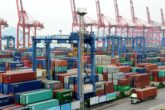August 13, 2020
To Protect America’s Edge, Focus on Tech Indigenization
The most effective use of export controls to achieve U.S. technology policy goals is protecting key areas of technological advantage and, where relevant, prolonging a country’s dependence on U.S. or foreign-origin technology. The United States has important advantages in this regard in its relationship with China, which is pursuing a comprehensive strategy for 21st-century technological leadership. China’s strategy comprises three thrusts: indigenizing foreign technology and related processes; diffusing that know-how throughout the Chinese economy; and boosting its capacity for innovation and manufacturing. Made in China 2025 is a prime example of how Beijing thinks about this strategy.
The most effective use of export controls to achieve U.S. technology policy goals is protecting key areas of technological advantage.
While the United States has considerable leverage to blunt China’s strategy in a way that benefits U.S. national security, it does need to adjust its current approach to technology-focused economic statecraft. Because the United States rarely has a monopoly on any given technology and associated know-how, unilateral export controls are generally ineffective and can be self-defeating if firms from other countries fill the void. Also, given that technology development is often fast-paced and takes place in the private sector, industry stakeholders should be consulted during the process of crafting export controls. This helps to avoid situations where initial policies are overly broad or unclear, which occurred when an attempt to limit surveillance software would have encompassed needed software security tools.
The best application of technology-focused export controls are ones that directly address the pursuit of indigenization, rather than trying to control a wide range of downstream products. This is especially so when export controls impact an entire industry or economic sector, as opposed to focusing on a single entity.
The best application of technology-focused export controls are ones that directly address the pursuit of indigenization.
In the case of semiconductors, the focus should be on the needed design and manufacturing equipment, and the considerable expertise required to use those devices effectively. Other than restricting a few select items such as field-programmable gate arrays, broad restrictions on commodity semiconductor sales are unlikely to have long-lasting impact because alternative acquisition pathways still exist. There also are important benefits to maintaining those sales: U.S. companies generate greater revenue and there is less incentive for China to attempt to indigenize.
End-use based export controls, particularly for human rights violations, are a special case and an important exception. It can be difficult to achieve the desired policy results given the ability to divert components from legitimate to objectionable use. Nevertheless, they are fundamentally important, including from a symbolic standpoint, and should be applied when appropriate.
About the Author
Martijn Rasser is a Senior Fellow with the Technology and National Security Program at the Center for a New American Security (CNAS).
Learn More
CNAS has asked a group of experts and policymakers to offer their perspectives on the policy goals that U.S. export controls should serve, and how and under what circumstances U.S. export controls can effectively achieve those policy goals.

Export Controls Are a Defining Instrument of U.S. National Security
A group of experts and policymakers offers their perspectives on the policy goals that U.S. export controls should serve....
Read MoreMore from CNAS
-
Trump Tariffs: How Will U.S. Plans Reshape the Global Economy?
Donald Trump says he's already decided the tariffs he will impose on countries that export goods to America, including the United Kingdom. Channel 4 hears from Emily Kilcrease...
By Emily Kilcrease
-
Edward Fishman on the Age of Economic Warfare
In the latest episode of the Sanctions Space Podcast, Justine is joined by Edward Fishman, author of Chokepoints: American Power in the Age of Economic Warfare and an adjunct ...
By Edward Fishman
-
The World Has Changed Since Trump’s First Trade War. Other Countries Are Ready to Fight Back.
With so many countries armed and ready, the challenge for Trump will be to use economic weapons to advance U.S. interests without leaving America isolated or ruining the world...
By Edward Fishman
-
Ziemba: China Could Impose Retaliatory Tariffs on U.S.
If tariffs and costs continue to rise, it will not be great for oil demand within the US, that's according to Rachel Ziemba, Adjunct Senior Fellow at the Center for a New Amer...
By Rachel Ziemba




